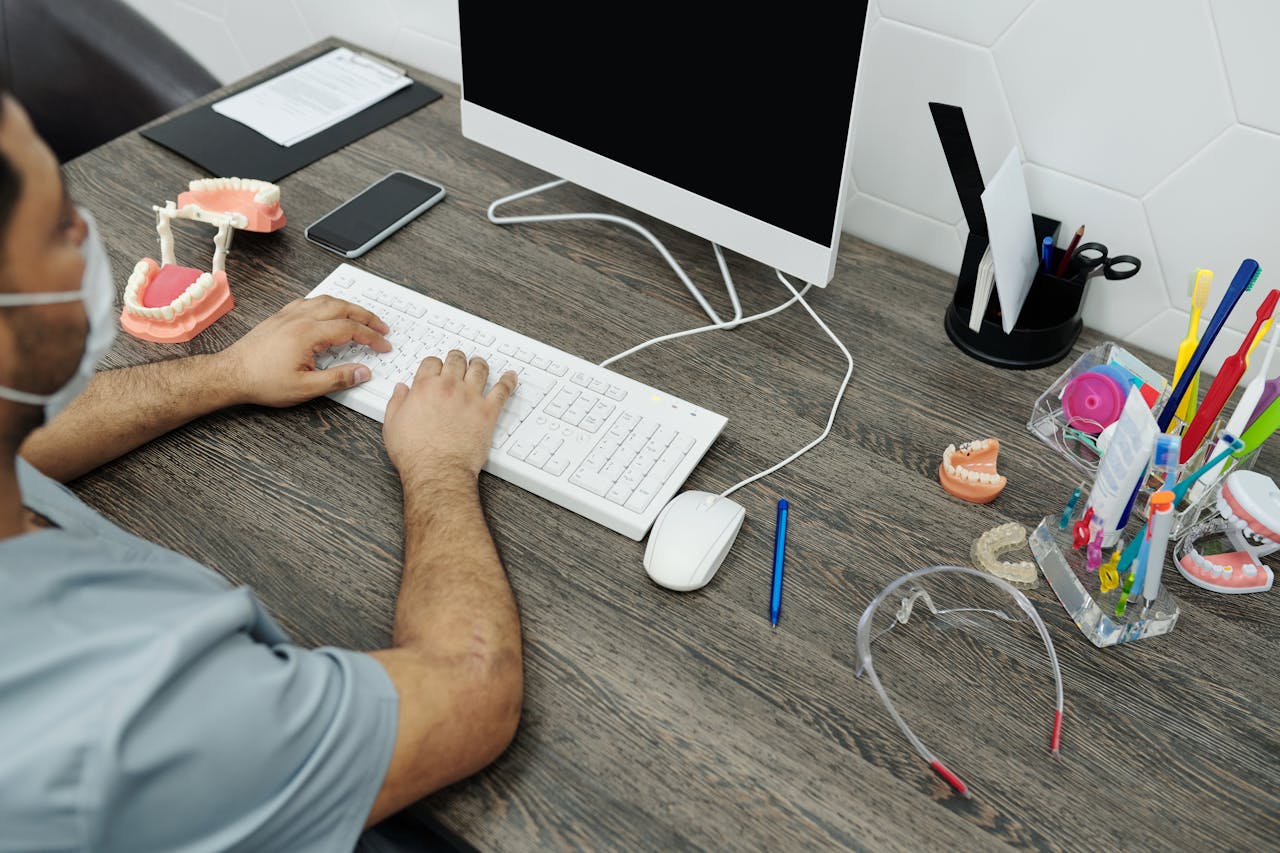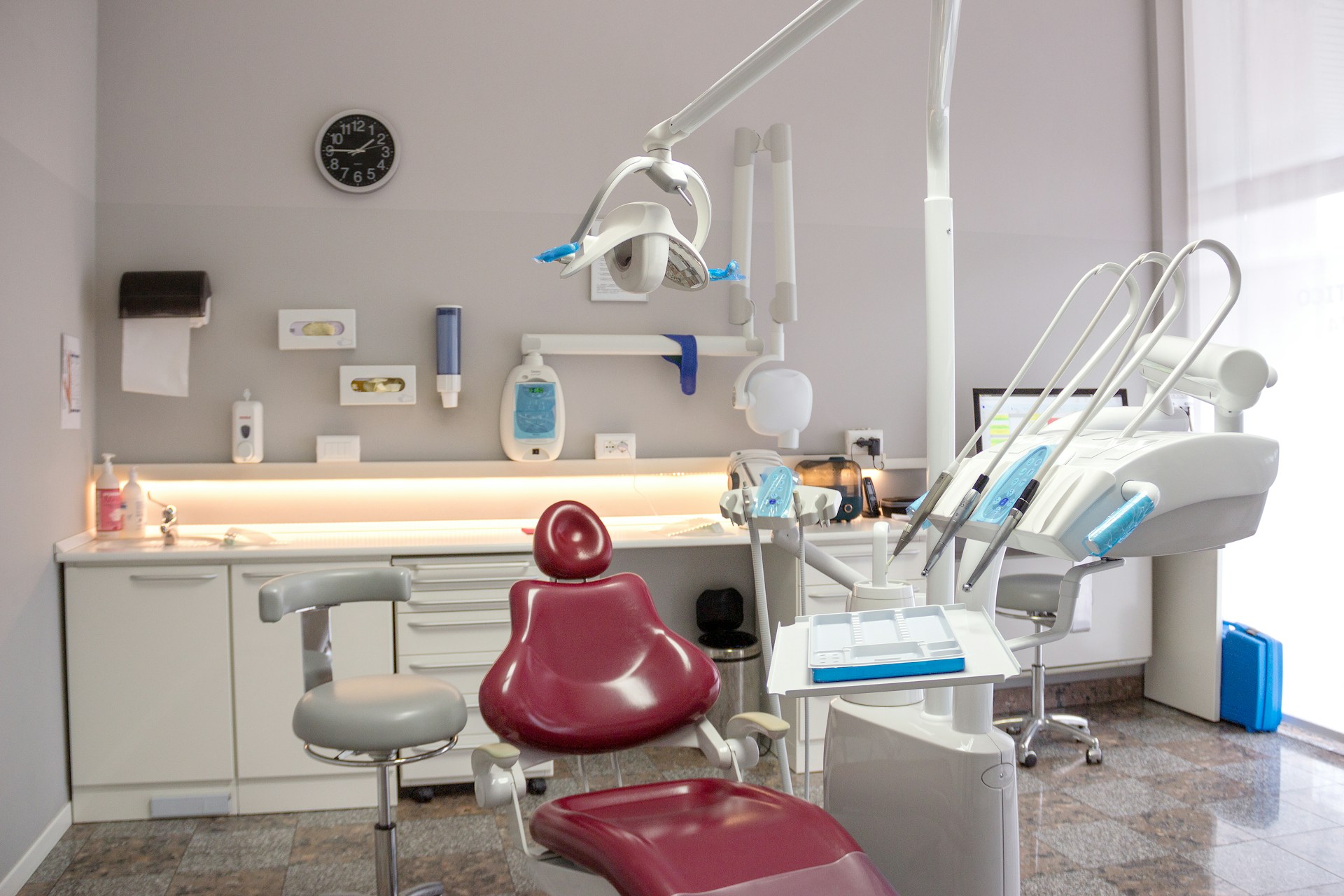How to Reduce Front Desk Burnout from Constant Phone Interruptions

Every missed call costs your practice money, but the real price is the toll on your front desk team who juggle dozens of critical tasks while managing constant phone interruptions. This comprehensive guide reveals evidence-based strategies to break the burnout cycle, from AI automation that delivers 18x ROI to workflow optimizations that recover 20 hours weekly for patient care.
Key Takeaways
- 39% of dental front desk staff are actively seeking new jobs due to workplace stress and burnout
- Phone interruptions require 23 minutes to recover focus, yet dental staff face interruptions every 4.5-6 minutes
- Replacing a single receptionist costs practices $17,659 to $70,638 in recruitment and training expenses
- AI receptionists deliver 12-18x ROI while saving staff 15-20 hours weekly
- 41% of dental administrative staff experience high emotional exhaustion from constant multitasking
- Practices miss 38% of incoming calls, losing over $100,000 annually in potential revenue
The Silent Crisis Destroying Your Front Desk Team
Your dental practice phone rings constantly throughout the day. Your receptionist, already checking in a patient, glances at the blinking light while verifying insurance. She's simultaneously processing a payment, answering questions about parking, and now the phone demands immediate attention. This scenario repeats every 4.5 to 6 minutes throughout her shift.
The result? A workforce in crisis. 39% of full-time front office staff are actively hunting for new jobs, driven away by the relentless cognitive assault of constant interruptions. The financial hemorrhaging extends beyond recruitment costs - practices lose $15,269 monthly from missed new patient calls alone.
Quantifying the Burnout Epidemic
The Human Cost of Constant Interruptions
Recent research from the UK MINDSET study reveals disturbing patterns among dental administrative staff:
- 41% report high emotional exhaustion - the primary marker of burnout syndrome
- 22% experience depersonalization - emotional detachment from patients
- 8% score at significant risk for complete occupational burnout
These aren't just statistics - they represent real people whose cognitive performance drops 40% from task-switching demands. Healthcare workers need 23 minutes and 15 seconds to fully recover focus after each phone interruption. Yet interruptions occur every few minutes, creating an impossible recovery cycle.
The Financial Devastation of Turnover
When burnout drives staff to quit, practices face staggering replacement costs:
- Direct replacement expenses: $17,659 to $70,638 per position
- Time to fill positions: 2.5 months average
- Revenue loss during vacancy: 6% daily decrease
- Task redistribution costs: $30,000+ annually in reassigned labor
The demographic patterns reveal additional vulnerabilities:
- Female providers: 66% burnout rate vs. 50% for males
- Younger staff (18-34): 71% burnout vs. 46% for those over 55
- Hispanic providers: 73% experiencing burnout symptoms
The Phone Call Catastrophe
Missed Opportunities Multiply Daily
Dental practices operate in perpetual communication crisis. Research shows 38% of calls go unanswered, with devastating consequences:
- 87% of new patients sent to voicemail never call back
- Average practice misses 20% of new patient calls
- Each missed new patient represents $1,527 immediate loss
- Lifetime patient value averages $4,500 over 7-10 years
The Cognitive Overload Reality
Front desk staff juggle impossible demands. Research documents they spend 34-39% of time multitasking, managing:
- Multiple phone lines and patient inquiries simultaneously
- Insurance verifications and claims processing
- Appointment scheduling across providers
- Interruptions every 4.5 to 6 minutes
The American Psychological Association confirms this task-switching extracts a 40% productivity penalty. Even 2.8-second interruptions double error rates.
Physiological Stress Responses
Constant interruptions trigger measurable health impacts:
- Sympathetic nervous system activation with each interruption
- Elevated cortisol and blood pressure levels
- Increased cardiovascular disease risk
- Development of "sadness and fear emotions" at work
Staff report 45% reduced productivity and 43% significant fatigue from mental gear-shifting demands.
Technology Solutions That Actually Work
AI Receptionists Transform Practice Economics
Leading AI platforms now deliver transformative results:
- ROI: 12 to 18 times investment
- Revenue increases: $50,000-$100,000 annually
- First-month results: $56,000 in new appointments
- Average practice gains: $73,000 yearly
Time Liberation for Human Connection
Automation recovers precious hours for patient care:
- Staff save 15-20 hours weekly - half a full-time position
- Individual gains: 2 hours daily for high-value activities
- Overtime reduction: $50,000 annual savings
- Call answer rates: 90% achievement with 100% after-hours coverage
The healthcare AI market explosion - from $6.7 billion to $22.4 billion in three years - reflects proven value delivery. DSOs report 12% revenue increases, 17% headcount optimization, and 24% profit improvements.
Workflow Optimization Strategies
Physical Design Reduces Interruptions
Environmental modifications yield immediate benefits:
- Strategic workspace layouts reduce cross-traffic interruptions and improve workflow efficiency
- Simple "Do Not Enter" signs cut treatment interruptions by 75%
- Designated quiet zones for focused administrative work
- Strategic phone placement away from high-traffic areas
Training Programs Build Resilience
The AADOM's phone skills certification addresses critical competencies:
- Conflict resolution techniques
- Systematic appointment management
- Patient reactivation protocols
- Stress reduction methodologies
Practices implementing structured training report reduced turnover and improved staff confidence. The investment logic proves compelling: with replacement costs reaching 2x annual salary, retention through skills development offers exceptional ROI.
Best Practices for Immediate Implementation
Evidence-based strategies that work:
- Three-ring rule: Answer within three rings to reduce abandonment
- Standardized greetings: Reduce cognitive load with consistent protocols
- Note-taking systems: Capture critical information systematically
- Morning huddles: Coordinate workflows and establish clear expectations
- Call-back protocols: Manage expectations when immediate response impossible
Patient Satisfaction Connection
Phone accessibility directly impacts practice success:
- 31% of patients will switch providers for better phone service
- First impressions form in 7 seconds of phone interaction
- Quality phone experiences increase retention and referrals
- Online reviews frequently mention phone accessibility
Professional development in phone skills correlates with improved patient satisfaction scores and reduced staff stress indicators.
Organizational Culture Shifts
Leadership's Role in Burnout Prevention
Management must actively address the crisis:
- Regular workload assessments using standardized metrics
- Investment in technology infrastructure
- Clear boundaries around phone responsibilities
- Recognition programs for stressed staff
- Workflow optimization initiatives
Creating Sustainable Work Environments
Forward-thinking practices implement:
- Rotation schedules for phone duties
- Dedicated administrative time blocks
- Technology integration for routine tasks
- Mental health support resources
- Regular breaks from phone responsibilities
Why Arini Stands Apart in Solving Phone-Related Burnout
Arini transcends typical AI receptionist limitations through its comprehensive approach to eliminating phone stress. Unlike basic answering services, Arini's AI-native patient engagement platform addresses the root causes of front desk burnout through intelligent automation that mirrors your exact office procedures.
The platform's Customizable Intake Workflows separate new and existing patient flows, capturing precisely the information your practice needs without burdening staff. The Live Call Dashboard provides real-time visibility into every interaction, eliminating the anxiety of missed details. Most critically, Arini's Workflow Engine automates complex multi-channel sequences - like confirmation campaigns that reduce no-shows by calling at optimal evening hours when patients actually answer.
What sets Arini apart is the white-glove onboarding where their team programs your AI receptionist to handle calls exactly as your best staff member would. This isn't generic call handling - it's a digital clone of your practice's communication style. The platform helps reduce missed call rates to near zero while improving appointment scheduling speed.
For practices serious about staff wellbeing, Arini's enterprise solutions offer deep customization that goes beyond answering phones to actively reducing front desk labor costs and improving patient satisfaction scores. Case studies demonstrate 12% revenue increases and 24% profit improvements while dramatically reducing staff stress. Ready to transform your practice? Book a demo to see how Arini can eliminate phone chaos for good.
Frequently Asked Questions
How quickly do staff members experience relief after implementing an AI receptionist?
Most practices report immediate stress reduction within the first week of deployment. Staff notice the difference when phones stop ringing constantly during patient interactions. Within 30 days, measurable improvements appear in job satisfaction surveys, with full benefits realized after 60-90 days as workflows optimize around the new technology. The key is starting with after-hours coverage to build confidence before expanding to business hours.
What's the actual cost comparison between hiring additional staff versus AI technology?
Hiring a full-time receptionist costs approximately $35,319 in salary plus benefits and payroll taxes, totaling $45,000-50,000 annually. Add recruitment costs of $17,659-70,638 and 2.5 months to fill the position. AI receptionists range from $25-3,000 monthly with many dental-specific solutions starting at $400/month, with no benefits, sick days, or turnover. Most practices achieve positive ROI within 30-90 days through increased appointment bookings alone.
How do patients react to AI receptionists compared to human staff?
Studies show patients primarily care about quick responses and accurate information, not whether the voice is human or AI. Modern AI achieves 90%+ satisfaction rates by answering immediately, never putting callers on hold, and providing consistent, accurate information 24/7. Patients especially appreciate after-hours accessibility and instant appointment booking. The key is proper AI configuration to sound natural and handle complex dental terminology correctly.
Can workflow optimization really work without adding technology?
Yes, but with limitations. Physical workspace redesigns, training programs, and protocol standardization can reduce interruptions significantly. However, these approaches don't address the fundamental volume problem - practices still receive the same number of calls requiring immediate response. Technology amplifies optimization efforts by handling routine calls while humans focus on complex cases requiring empathy and problem-solving.
What metrics should practices track to measure phone-related burnout?
Key indicators include staff turnover rates, overtime hours, missed call percentages, time-to-answer metrics, and patient satisfaction scores. Advanced practices track "interruption frequency" - how often staff must stop current tasks for phone calls. Employee satisfaction surveys should specifically address phone-related stress. Financial metrics include cost-per-appointment-booked and revenue-per-call ratios. Regular monitoring identifies problems before they escalate to resignations.









